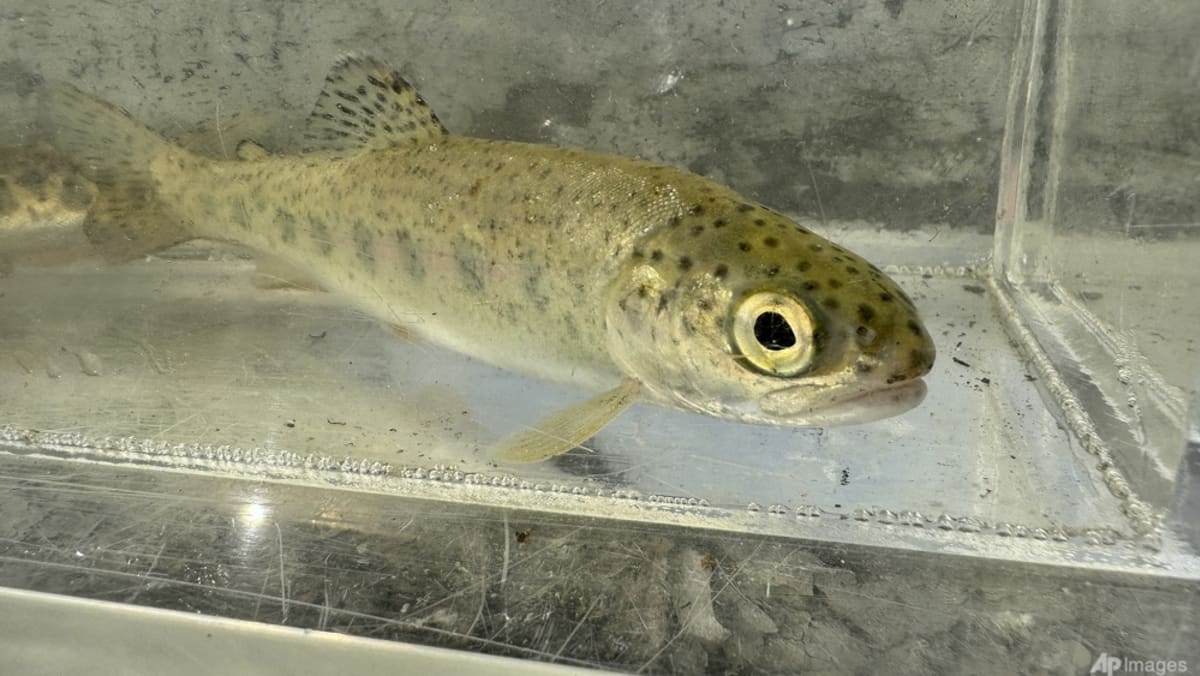This story is part of CBC Health's Second Opinion, a weekly analysis of health and medical science news emailed to subscribers on Saturday mornings. If you haven't subscribed yet, you can do that by clicking here.
A dangerous type of bird flu virus discovered in the lung of a U.S. dairy cow that didn't show symptoms. Viral particles identified in processed, pasteurized milk. Genetic sequences showing distinct changes in this H5N1 strain that's been rapidly spreading throughout American cattle.
Those were just a handful of the rapid-fire developments this week as an unprecedented H5N1 outbreak among U.S. dairy cattle continued to evolve.
Scientists now warn this form of avian influenza is likely more widespread in cows, and was transmitting for longer than official reports suggest. And while American officials are ramping up testing — all in an effort to keep sick cows from being moved between states — others say we're already several steps behind the spread of a disease that could pose a major threat to human health.
Michael Worobey, a researcher from B.C. who's now head of the department of ecology and evolutionary biology at the University of Arizona, said these cattle infections may have been "flying under our radar for months," providing ongoing opportunities for this virus to acquire adaptations that could lead to a flu pandemic.
"I think, in many ways, this is the biggest news story in the world right now."
Tracing the root of outbreak
After the U.S. Department of Agriculture posted more than 230 genetic sequences from the country's growing H5N1 outbreak last Sunday, Worobey was among the scientists racing to analyze the complex set of data.
The sequences were from cattle — amid an outbreak impacting more than two-dozen herds across nine U.S. states — but also several bird species, cats, skunks and raccoons.
It's possible that local birds passed the virus to local farms, in different states, and they're all spreading a genetically similar lineage, he said. But Worobey believes what's far more likely is that the cattle outbreak has a single origin point.
In an interview with CBC News, he outlined H5N1's evolutionary tree, with a distinct branch of sequences linked to cattle. All those sequences share the same mutations, Worobey added.
"This is the hallmark of a single jump, that's at the root of this outbreak," he said.
And that jump likely occurred earlier than the first known cattle infections reported in late March.

A single introduction could have happened as far back as November or December, with a distinct lineage of H5N1 then spreading undetected for months, Worobey said. He added missing details in the initial U.S. data dump — including exact cattle locations and dates — made it tough to know for sure.
The cattle sequences also contain "at least two distinct mutations" that are known for increasing the risk of a flu virus infecting and transmitting in humans, Worobey added.
"We just are producing more and more [opportunities] for evolution to arrive at something that can transmit in humans, and potentially kill a large proportion of them," he said.
Milk discoveries
What's not yet clear is how, exactly, the virus is spreading among cattle, though several scientists told CBC News that possibilities include close contact between cows being transported between states or contaminated milking equipment.
"If the cattle indeed have [infection] in the udders, then transmission could be through milking equipment," said Michelle Wille, a senior research fellow with the University of Melbourne's Centre for Pathogen Genomics and the department of microbiology and immunology.
"A number of infected states have indicated that [avian flu] was detected in dairy herds that recently received cattle from Texas — so transport of cattle is likely playing a role in spread."
At this point, it's still unclear how the virus is "sustaining transmission" in cattle populations, added virologist Angela Rasmussen, from the University of Saskatchewan's Vaccine and Infectious Disease Organization.
It's also likely the virus is being transmitted even when cows aren't showing symptoms — which have so far been mild, including low appetite and reduced milk production — several scientists agreed.
WATCH | Bird flu spreads in U.S. cows:
Bird flu is spreading in cows. Are humans at risk? | About That
This week, officials announced dual discoveries of H5N1 in the lung of an asymptomatic cow in North Carolina, along with viral particles in pasteurized milk, suggesting infected cows almost slipped into the food supply chain.
Ohio State University researchers also said they recently did their own independent sleuthing, collecting 150 commercial milk products from dairy processing plants across 10 states. The team found fragments of viral RNA in close to 60 samples — nearly 40 per cent of the products, all of it available on store shelves.
Rasmussen stressed that the discovery of viral RNA in milk doesn't necessarily mean it can make people sick if it's fragments of a virus, not something infectious. Dairy products also go through pasteurization, a heating process meant to eliminate a variety of pathogens.
But in a Thursday update, the U.S. Food and Drug Administration (FDA) said additional testing is still needed "to determine whether intact pathogen is still present and if it remains infectious, which would help inform a determination of whether there is any risk of illness associated with consuming the product.
The FDA added retail milk studies so far have shown no results that would change its assessment that the commercial milk supply in the U.S. is safe.
What's more concerning, Rasmussen said, is that these developments suggest the cattle outbreak is "much larger than originally thought."
Like buying lottery tickets
To better understand the scope of H5N1's spread among cattle, increased testing of dairy cows is now a key facet of the American response.
The U.S. will require dairy cattle moving between states for commerce to be tested for bird flu, Secretary of Agriculture Tom Vilsack told reporters this week. All labs and states must also report positive tests for any form of influenza.
The concern from both officials and scientists alike stems from the potential impacts on animal health and the food supply chain, and the possibility that this virus is inching closer to a pandemic-level threat to humans as well. While the reported cattle infections haven't been serious, scientists warn they could fuel adaptations that could make it easier to infect more mammals.

Since 2022, only two human infections have been reported in the U.S., with the latest one tied to these recent cattle outbreaks. Both were mild. But sporadic human cases linked to contact with infected animals in previous outbreaks have been happening around the world, with many causing serious symptoms, severe pneumonia, or even death.
Based on available human case data to date, the death rate of this form of bird flu is thought to be a staggering 52 per cent, though scientists say there are likely far more mild cases going underreported and skewing that data.
Even so, with so many cattle being infected and coming into contact with farm workers every day, the number of human exposures is going up, Worobey warned. "It's kind of like buying more and more lottery tickets in the lottery of, 'Can a new pandemic virus actually evolve?'"
Infectious disease physicians in Canada are keeping a close eye on the places where livestock, wildlife and humans intersect.

Officials at the Canadian Food Inspection Agency have not yet responded to a series of questions from CBC News, but said online it has not detected this type of avian influenza in Canadian cattle, so it's not currently testing raw or pasteurized milk.
"[Highly pathogenic avian influenza] is not a food safety concern as pasteurization kills harmful bacteria and viruses," the agency said on X, formerly Twitter.
Dr. Samira Mubareka, a clinician scientist at Sunnybrook Research Institute and the University of Toronto, is watching for any signs of the virus becoming more adept at transmitting between mammals, including humans.
"From the virus's perspective, the more transmission there is, the more opportunities to adapt," Mubareka said. "That is concerning."
Mubareka said any enhanced change in transmission among mammals would also signal an enhanced ability to transmit among humans, which is why it's so important to find out whether those in close contact with cattle or wildlife are at higher risk.
She said even if this H5N1 virus doesn't infect more people, the virus has already hit animal health significantly and could affect food prices, food security and livelihoods.
Rasmussen agreed, and said the impacts could be grim if human-to-human transmission begins.
"It would have a devastating impact on human and animal health, on the economy, on the food supply," she said. "It would be a worst case scenario."

 1 week ago
38
1 week ago
38











 English (US) ·
English (US) ·  Turkish (TR) ·
Turkish (TR) ·